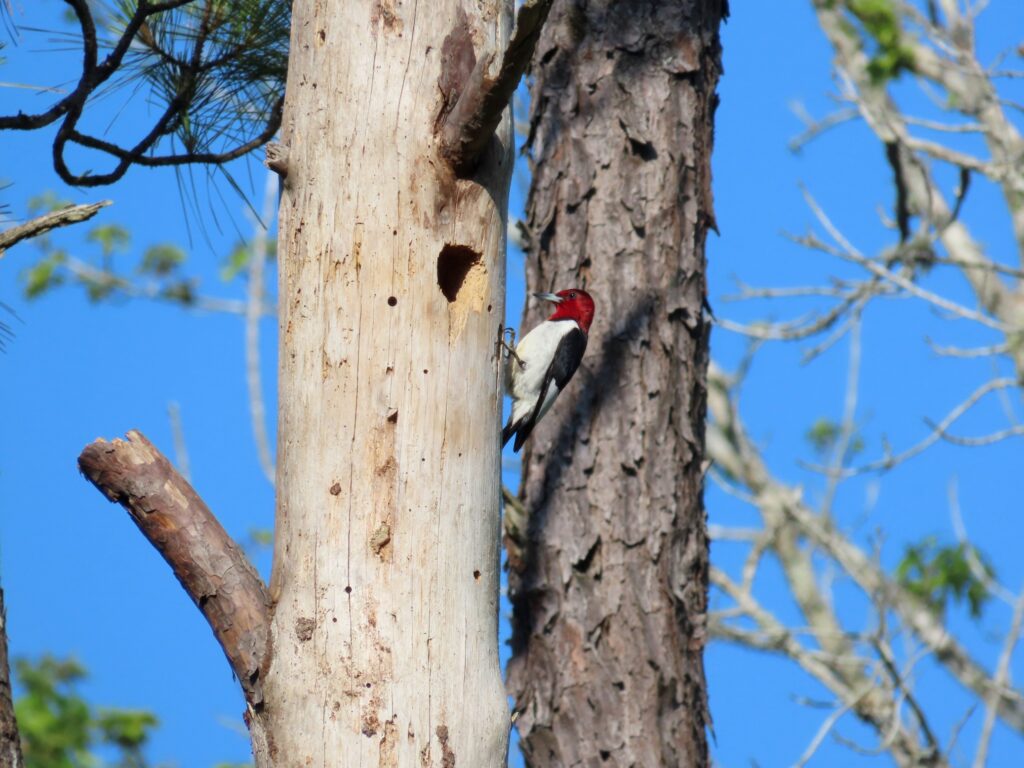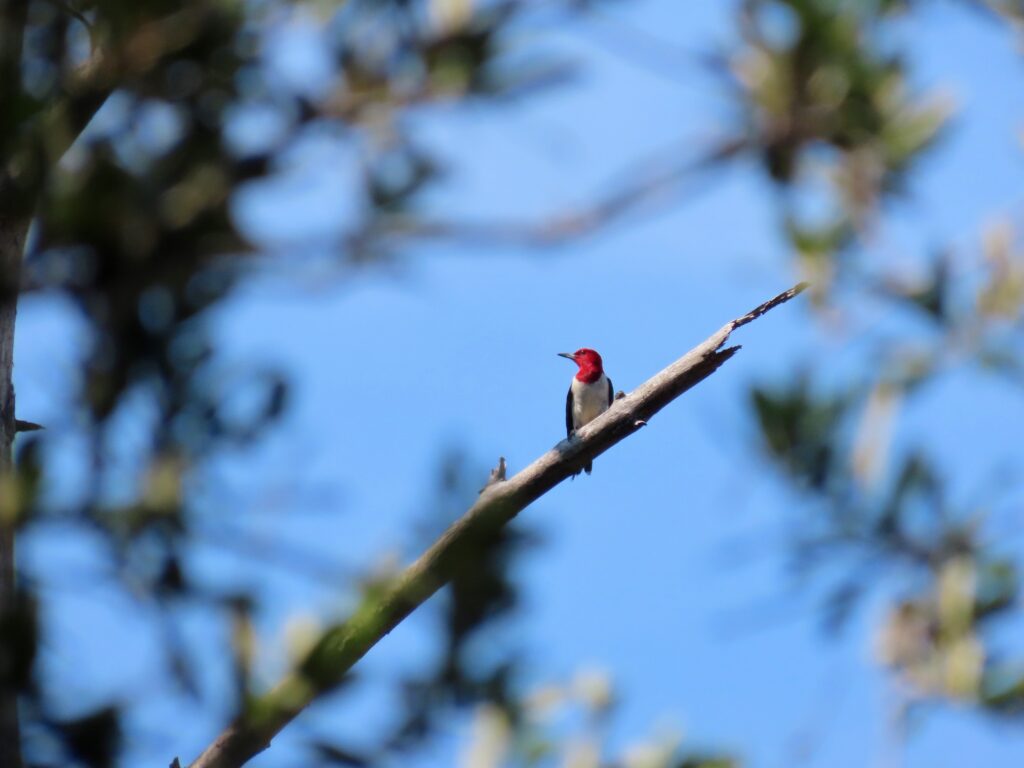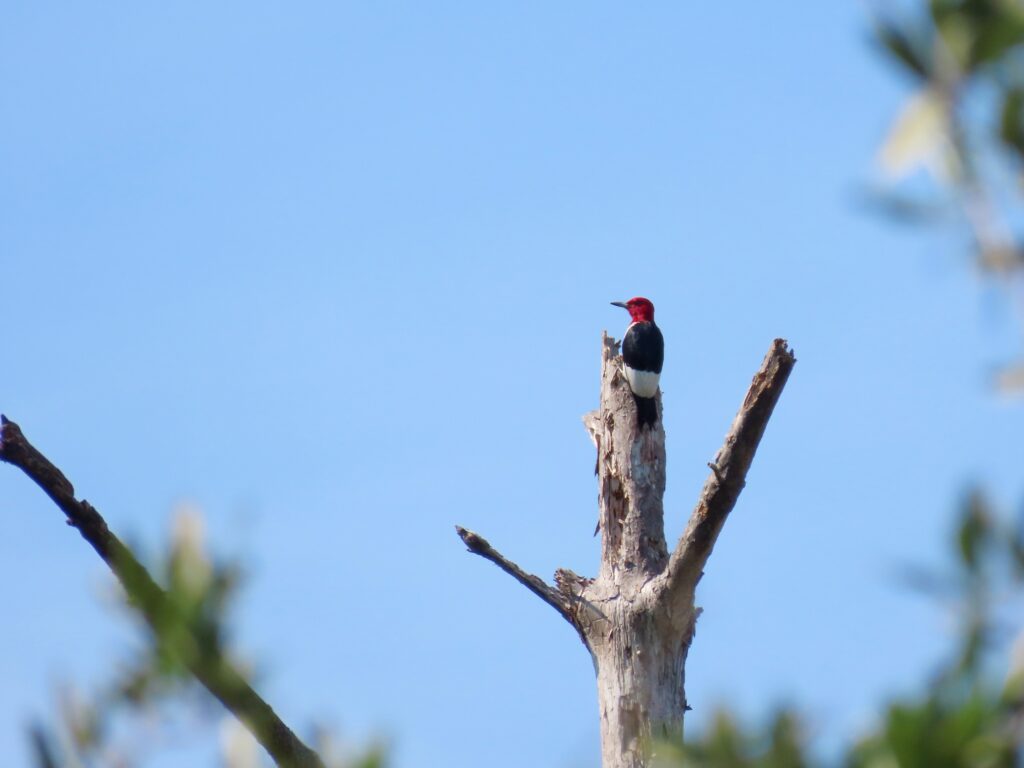




This week for Flora and Fauna Friday it’s the colorful, colonial, and cacophonous Red-headed Woodpecker (Melanerpes erythrocephalus).
With a bellowing and a banging this boisterous bird comes barreling up the bottomland to lit above a beaver dam. Black and white and red all over the dome, this bird is unmistakable by eye. A sold blood-red head, silver bill, a jet-black back and tail, along with snow-white belly and secondaries gives this bird an utterly one-of-a-kind plumage in the Eastern United States. And it’s also unignorable by ear, with startled vibrating screams and resonant barking rattles that ring throughout the canopy as one, then two, then four birds join in. Red-headed Woodpeckers are, sort of, a colony forming Woodpecker. They’re not a close nit family unit, and thus not a true colony, but more a tenuous alliance of neighbors to further self-interested goals, like an HOA, or maybe a street gang, or both. The Red-headed Woodpecker is found year-round throughout much of the South, to include all of South Carolina. They are omnivorous and their varied diet consists of wood boring insects, flying insects, seeds, nuts, fruits, and small vertebrates. They also build seed caches to help get them through the winter. Red-headed Woodpeckers inhabit forests dense with hardwood trees and have a strong preference for floodplains and the margins of large wetland systems. In the Lowcountry, Red-headed Woodpecker colonies can most often be found along river floodplains, bottomland margins, sea island lowlands, ghost forests, and beaver dams. These forest types foster environmental conditions that stress the trees and occasionally kill off a good number of them. These environmental stressors and periodic tree die offs create the perfect little suburban neighborhood for a merry band of miscreant Red-headed Woodpeckers to move into. The stressed trees of these environments are prone to disease, which subsequently invites insect pests, creating a pantry for our Woodpeckers to pursue. The already dead trees harbor insects as well but, more importantly, they collectively create a ghost forest. Here the Woodpeckers can excavate their nest cavities for years going forward. Surrounding these dead and dying trees are generally also some oaks, beeches, and other seed-bearing trees that are doing just fine on the rich wetland soils and produce a bounty of seeds for the Woodpeckers to feast upon each year. Not a bad neighborhood for a Woodpecker to move into! But Red-headed Woodpeckers don’t want neighbors. They have a darker side and they are known to raid other birds’ nests to eat the eggs and chicks, or to injure the parent birds in the process. This harassment continues until the encroaching birds leave or die. This exclusionary behavior and their particular habitat preferences give Red-headed Woodpeckers a sporadic distribution across their range. They concentrate into very specific regions of the landscape and are scarcely found anywhere else. This is unlike many of our other Woodpecker species, which are rather ubiquitous throughout the Lowcountry and coexist in separate niches.